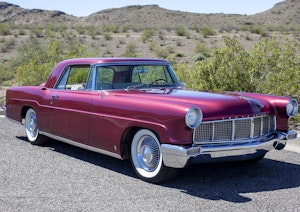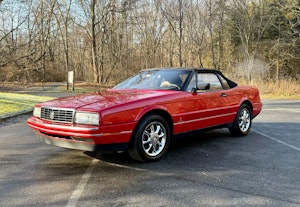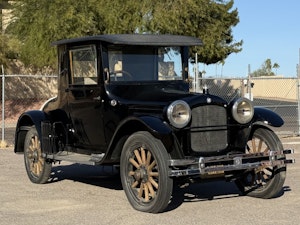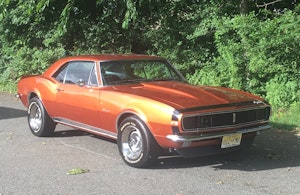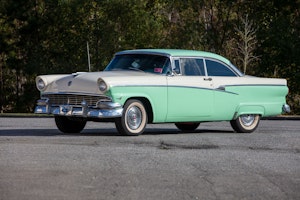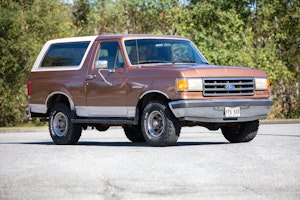Saleen collaborated with Fender to build a supercar-inspired Stratocaster
Steve Saleen has revived his supercar company and now assembles the Saleen 1 in Corona, California. Ron Thorn also happens to work for a company located in Corona. Thorn’s the principal master builder for the custom shop at Fender Musical Instruments; if a big star is playing a Fender guitar, there’s a good chance that Thorn had a hand in crafting it.
It turns out the two men don’t simply share a city—they share a favorite hangout spot and, now, a project that straddles the automotive and musical worlds.
Thorn was getting some adult refreshments at a local cantina when he noticed someone wearing a Saleen shirt. When the luthier asked him what he was working on, the Saleen employee responded, “About a thousand horsepower,” and invited Thorn to come check out his facility. As a serious car enthusiast who has owned Cobras and other hot Ford-powered sports cars, Ron leaped at the opportunity.
The result of that visit is the Saleen Stratocaster 1, a custom carbon-fiber, alder, and maple electric guitar inspired by the Saleen 1 supercar. To kickoff its new Dream Factory series on YouTube, Fender produced this video featuring Thorn, Steve Saleen, and the new one-off Saleen Strat, and released it just in time for the huge NAMM instrument show being held this week in Anaheim, where the guitar is on display next to a Saleen 1.
Marketplace
Buy and sell classics with confidence
Fender has a history of working with car manufacturers, starting with the chrome-plated Stratocasters it made in 1999 for the Ford Mustang’s 35th anniversary, so the collaboration, particularly since the companies are neighbors, was a natural idea.
While the Saleen-inspired guitar’s body and headstock shapes follow the outline of traditional Strats, Thorn’s construction methods were not traditional at all. Conventional Stratocasters typically have hardwood bodies and maple necks, but Thorn wanted to integrate some of the Saleen 1’s carbon fiber. First, he sculpted the back of the body in wood to use as a plug for a fiberglass mold. He eventually used that mold to lay up the black carbon-fiber shell that forms the back of the guitar.
A solid maple body cap was then hand-carved by Thorn to evoke the curves of the car. The maple cap was then taken over to the Saleen facility and finished by its paint shop in the same candy apple red as used on the Saleen cars and using the same five-step painting process.
To emulate the mid-engine Saleen’s exposed motor, which sits under a tinted glass cover, Thorn set the guitar’s “powerplant”—its inductive pickup, made by TV Jones, and bridge—below a very thin, tinted glass cover. The custom string saddles stick up through holes in that cover.
There is an alder wood center block that extends from the neck mount past the bridge to the tailpiece for stability and increased sustain. That alder has been capped by carbon fiber for the the pickup surround/pickguard, while the quarter-sawn maple neck has been topped by three plies of clear-coated carbon-fiber for the fretboard and headstock.
Electric guitars need volume and tone controls, but Thorn didn’t want to do anything to obscure the clean lines of the Saleen-inspired guitar’s body. Instead he put an automotive spin on a guitarist’s pedalboard, moving the potentiometers to a footboard mounted with three pedals, just like on Thorn’s sports cars. The “gas” pedal controls volume, the “brake” adjusts tone, and the “clutch” pedal is actually a wah.
If you happen to own a candy apple red Saleen 1 and you’d like to have a matching guitar, the Saleen Stratocaster is for sale, priced at $33,000. It will be on display through Saturday at the NAMM show in Anaheim—just remember to bring your checkbook.


